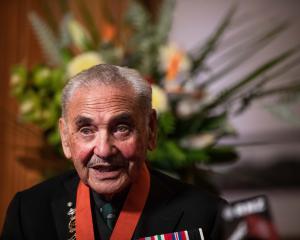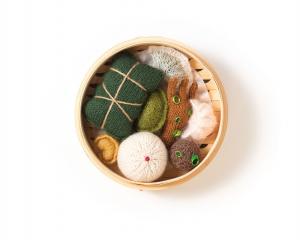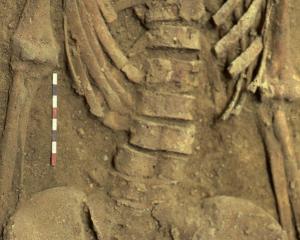When most people take a business trip it involves cosy hotels and taxi rides, but not for Dunedin chocolate-maker Liz Rowe. She tells Rebecca Fox about her trip to source new Mainas cocoa beans deep in native forest in Papua New Guinea.
Eight hours into a 10-hour hike through tropical bush in 30degC heat, as the rain poured down and darkness fell, Liz Rowe had one thought running through her mind.
Every cocoa bean grown by the Papua New Guinean growers she was heading to see in the village of Inasi, deep in native forest in Middle Ramu district, Madang province, had to be carried down the very same track on the backs and shoulders of those same growers.
Her mind boggled. Some of the young villagers walking with her down the narrow, hardly visible track, were doing it in bare feet or jandals and loaded up with gear.
She was struggling with blisters in hiking boots.
"Thank God the boys carried the packs in for us, or else I wouldn't have lasted three hours.''
The trek should not have surprised her.
She had been to Papua New Guinea before, even visited other villages, although admittedly they had vehicle access.
She had also been warned by her PNG contact, Richard Kawah, that the trip to the small village where he came from and which hoped to supply cocoa beans required a day's walk.
However, the reality of what she experienced was not what she had envisaged.
As transport was so expensive in PNG, Mr Kawah advised Liz and her partner to take the bus to Madang as it would take only a couple of hours.
"We thought that's fine. The bus turned out to be a Toyota Hiace van.''
And it took a couple of hours to pick everyone up before they even set off for Madang.
It was a 250km trip - similar to Dunedin to Alexandra - but it took eight hours.
"The driver spent the first half swerving from one side of the road to the other to avoid potholes. He knew every pothole on that road. He was going reasonably fast and every now and again the road would disintegrate into nothing.
"Then he warned us the road would get bad. It was two hours going over these big hills into Medang like going over a riverbank. It was the most dreadful road.''
They got there safely in the end and were dropped off with a 4am pickup expected - but it was 7.30am by the time their ride turned up the next morning.
This time it was a ute with the driver, Ms Rowe and her partner in front and seven others in the tray behind.
"They were in the back of the ute for three hours over this really hard metal road the Koreans had put into to access a forestry block. Then this horrendous dirt track for another hour.''
By the time they arrived in the village where they were to leave the truck and start walking, Ms Rowe had psyched herself up for a walk of about six or seven hours.
It was 31degC-plus and 90% humidity.
"Well, it was about 10 hours of walking, the last two and a-half in the dark. Fortunately [partner] Pete had brought a couple of torches.''
Especially given there was a massive thunderstorm that made the narrow track, which was covered in debris, even harder to see.
But it did cool the temperature, which was a relief, she said.
"You had to scramble over fallen trees.''
It was an eye-opener as she realised every cocoa bean the village grew had to be carried out along the track.
"There are no helicopters, no boat. Well, occasionally the river floods and they can get things down on this type of canoe they've got, but generally speaking it all goes out on foot.''
The group arrived at the village about 9.30 that night after passing through three smaller villages on the way where they were required to greet the inhabitants, shake hands and have a chat.
"Everyone was wildly curious about us. Half the kids were terrified and the other half were so curious and cheeky.
"Apparently the only other white person they'd seen was Fr Berry, a Catholic priest, about 10 years before.''
The villages were very self-sufficient with the only food brought in being rice and salt, and their protein, such as wild pig, hunted by bow and arrow.
She was shocked to see bandicoot sizzling on little fires with the skin still on.
"They weren't gutted or de-headed. I could barely look at it let alone eat it.''
They mostly cooked up large pots of vegetables, including huge yams, and ate fish from the river supplemented by wild fowl eggs.
It was a very traditional village in which most of the houses were built at ground level, as they believed evil spirits or their enemies would otherwise slip in underneath and attack them.
Ms Rowe and her partner slept at Mr Kawah's father's house, as it had a quite new iron roof, courtesy of iron brought in to protect the cocoa beans.
The village had no school so the older children walked four hours to the nearest school, staying there during the week.
Mr Kawah was the first boy from his village to go to college in Medang, helped by going to schools in his mother's village where nuns helped with fees and books.
Meeting some of the village children made Ms Rowe want to help, especially a girl, Geraldine, and a boy, Darius, who both wanted to go to college.
"I've had big discussions about this: what is the right thing to do? Should I do anything? But I think the best thing I can do at the moment is buy their beans and pay a good price.''
She ordered some beans from Mr Kawah but would still be sourcing from other PNG suppliers until the village sorted out its storage system, she said.
They had a good look around the cocoa plantations and systems the village had in place and then a village meeting was held with attendees called in by drum-playing.
"They were sending messages around like Morse code.''
At the meeting, the men sat in the middle, the women clustered around the edges, to hear why Ms Rowe and her partner were visiting.
There were about three languages spoken, so various people, including Mr Kawah's wife Estella Beiye, translated for them.
Ms Rowe told them about the need for them to concentrate on the quality of their beans and their processes, as well as what she did with it in Dunedin.
"I had taken some chocolate with me, but it had melted and reset so wasn't that flash. You could tell they didn't really like what they were tasting.''
Cocoa bean was a new crop for the villagers and they did not eat it themselves, even though it was quite a nutritious food.
"It is all harvested by hand, every step of the process. They have no power, the only power is the odd torch.''
The beans were being stored in Mr Kawah's father's house as that was the only dry space.
The next day they got up ready to make the return trip, although Ms Rowe was not looking forward to it due to a fine set of blisters.
After breakfast they said goodbye to the villagers, who presented them with wild fowl eggs wrapped in leaves as gifts.
"I had four of the jolly things. It's not a very practical gift to give people who are going to walk in the bush for 10 hours.''
While others carried most of them, she was left with one egg to carry and "hope like hell it didn't break''.
They made it back to the ute in the pouring rain and again headed back down the rough roads back to Medang.
"Iwas amazed at how different this village was. It's hard to find the right word for how different it was.
"It was a really interesting trip. Fun isn't quite the descriptor. Maybe once my toe starts feeling better I'll think it was more fun.''
Papua New Guinea
• Population of 7.2 million
• 80% live in rural areas with no modern facilities
• 700 native languages
• 64.2% over the age of 15 are literate
• Gained independence from Australia in 1975
• Is part of the Commonwealth
Inasi chocolate
• The first order of beans from Inasi is expected mid-February. When it arrives they will be transformed into Ocho's single origin chocolate.












